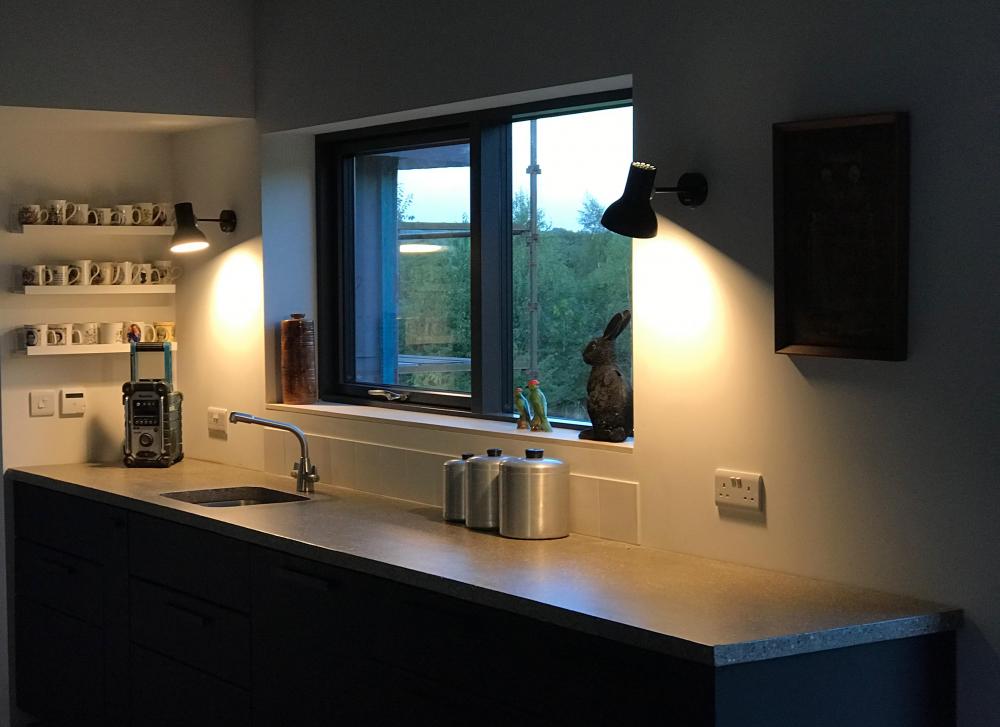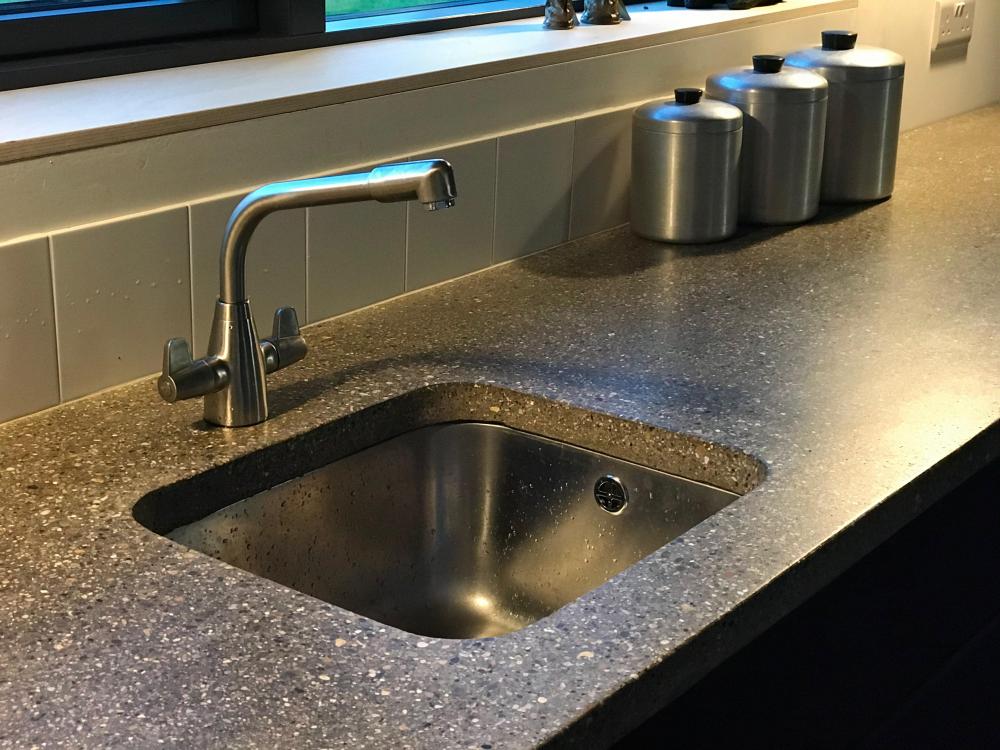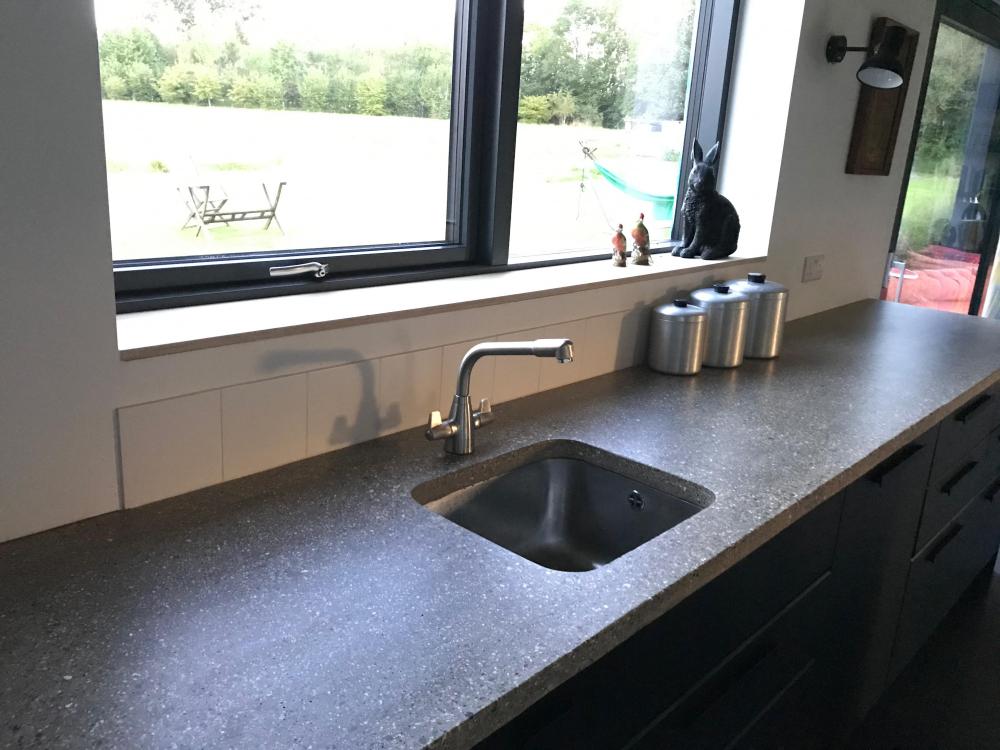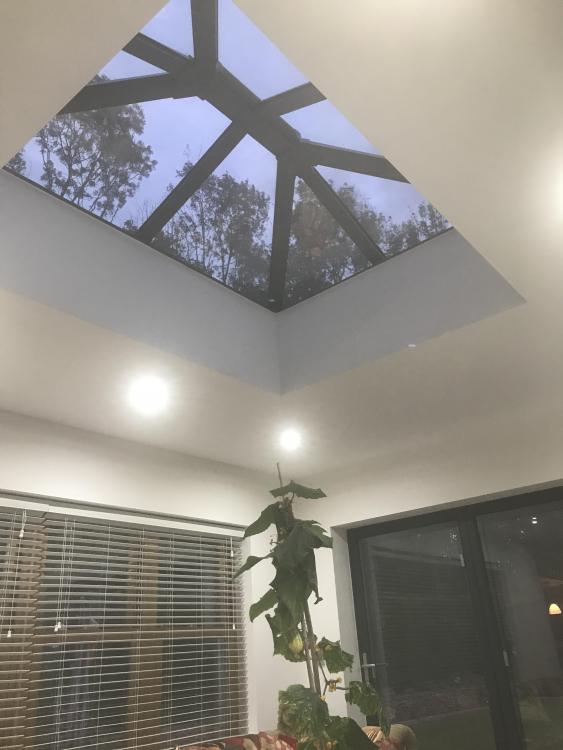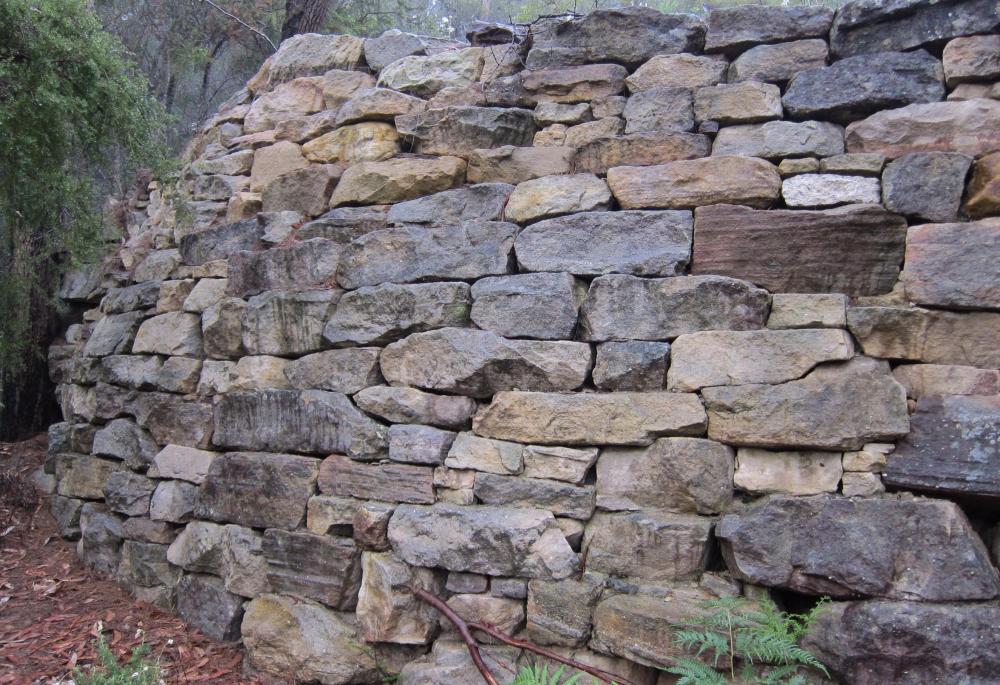Leaderboard
Popular Content
Showing content with the highest reputation on 09/03/20 in all areas
-
4 points
-
For the benefit of others, which one has gone bust. I guess from that the No 1 advice is pay by credit card.3 points
-
The main problem I see will be your invoices for the garage being dated before your planning permission. That's been a problem in the past.2 points
-
I made some formas using 18mm matt white melamine. Cast in the garage and then moved across to the house. I purchased a cheap 4' wet grinder off the bay which has worked surprisingly well. Started with a 30, 50, 100 and finished with a 200 using copper bonded diamond grinding/polishing pads. I did a few tests with different aggregate but went with bagged 20kg Blue Circle High strength 40N for consistency across the 3 worktops. Our Pure DAB gave up after 20 years so Makita for the win.2 points
-
Upping the dead load I would go to 47x195@400 centres and doubled at the sides of the lantern assuming it is running with the joists rather than across them. That depth will also allow you to use more insulation assuming this is a cold roof.2 points
-
I'm a bit late but another user of fine mesh metals used 3mm with 4mm front and top faces. Used rubble and front faced with local gabion stone, no need for separate wire separator just use a nit of ply that you can pull up as you go. If you need to walk on them a lot while building put some boarding over to protect the shape. Some pics in my blog of this in progress and when complete.2 points
-
Around here it would be time, cost and aggravation.2 points
-
Hello everyone, first post and just wanted to introduce myself as you all seem like an extremely informative and helpful bunch - I hope one day to provide the same level of contribution and advice when we finally get to build our dream! We are hoping to build a 4 bed Passivhaus in North Somerset, about 8 miles south of Bristol. We are still in the very early stages of planning, as in, not sure if the plot in question has any potential for planning as yet, so have been spending a considerable amount of time reading about the Local Plans, NPFF and what the implications are of trying to build a village washed over with the Green Belt and is outside of a settlement boundary. The plot is part of a large garden, so might be considered a windfall plot but the two issues I mentioned are obviously very difficult to overcome, if at all. We do not have the sort of budget for a Paragraph 79 house but nevertheless given the location, we felt it was an avenue worth exploring further. In any case the research we have been undertaking generally won't be a wasted effort, since I feel it is helping us understand the build process and makes us better informed clients. In terms of build systems we are very keen on ICF, and going through the process now of trying to understand what the pros and cons are of the various systems - of which this site has proven very helpful already! We have also started to try and make a short list of architects that meet the following criteria: have demonstrable Passivhaus experience, have ICF experience, and can provide a Passivhaus design beyond just a box (yes I know that it is the most efficient design in terms of energy efficiency, but hey, its our dream :). this has proven difficult to say the least, the vast majority of architects who are local who have Passivhaus experience seem to only have experience with timber frame or seem so fanatical about the concept of eco design that I wondered whether we would be chased away with pitch forks if we even broached the idea of a monolothic concrete house. :). The other type of architects we found with lots of Passivhaus experience seem to be based in London, and frankly I wonder whether they would be so fancy that our fairly modest budget just wouldn't be of interest to them. If anyone can recommend an architect who meets the above criteria that would be great. So anyway, that's a brief synopsis of where we are, I sincerely hope to be able to contribute further to this site with updates!1 point
-
Hello and welcome. I am building an ICF build about 4 miles north of you in Dundry, so feel free to drop in if you'd like a closer look. With regard to architects, I would say you don't need one experienced with Passiv Haus unless you absolutely want a certified plaque on your door. ICF is relatively straightforward forward to apply the three key principles of low energy design: extra insulation, great airtightness and minimal thermal bridging. This is the approach I followed and should end up with a property that meets the requirements of Passiv Haus. That said, if you are envisaging large expanses of glass and a very modern design having someone run the PHPP software to determine how bad you could overheat in the summer would be prudent.1 point
-
1 point
-
Mainly because the true test of how a company operates is how they deal with a complaint. They could hold their hands up and offer a full refund or replace the door. Or they might not. But the very least is you give them a chance before they get ripped to bits here.1 point
-
No you will have to work round them - Western Power I think insist on 600mm clearance. I’d also get a cat scanner and double check where they are - probably find water is the opposite side of the road but the farm will have a decent 63mm main spur I expect so you may be able to tap that.1 point
-
I've no idea if this is correct. But as its a new garage I would think it was OK. Whether you done the garage first or last makes no odds as its onky the house part you were concerned with and needs knocked down. There was no garage so thats a new bit.1 point
-
1 point
-
Looks like a pair of LVs running across the front - build the garage first and put the meters in there would be my choice.1 point
-
1 point
-
Just hold fire on that and give them a chance to rectify the situation first. You can then come back and update one way or the other and paint a complete picture.1 point
-
If you need advice and a lot of lime then get in touch with Mike Wye - probably one of the best and most knowledgeable suppliers of lime products.1 point
-
1 point
-
1 point
-
1 point
-
I believe if built before 1948 the front of the outbuilding would also be considered the front of the original house. See top of page 15 in the technical guide. and the definition of original... So if built prior to 1948 it doesn't matter if the outbuilding was an extension its considered part of the original building.1 point
-
Yes I do have two old broken electric drill on the "parts doner" pile, so I suspect with some adaptation one of their switches will do.1 point
-
Is that a roller door? Rather than "fix" the issue on the floor, how about a D shaped rubber seal on the bottom of the door that will squash down onto the floor and take up the irregularities? My roller door came with such a strip attached and it works very well.1 point
-
@joth can you post up photos when complete. Do the birch ply carcases have exposed edges and inset doors? Maybe do a new thread.1 point
-
No but because the extensions would join together meaning the PD rules for side extensions would not be met, i.e. more than half the width of the original house.1 point
-
This sink is a separate area, against the wall. That's 6mm steel worktop (a friend's company is laser cutting for us), with a cut out for recessed steel basin, all sat on birch ply carcuses. The island will be Sapienstone Malm Black, with a bora Pure X hob recessed in it but no other cut outs or changes of material so it should just look like one big slab of black. The edge will be polished and Arris edge detail, with the exposed18mm ply edge underneath it set back in slightly. The overall effect will be rather like https://koivu.co.uk/kitchen/woodford-kitchen-grey/ but topped in Sapienstone rather than quartz. http://www.nerostein.co.uk/ will fabricate it (in Estonia) to the kitchen designer's CAD drawing and ship over. Sounds wonderful!? Lets hope it all works out.....! Good luck with your plans.1 point
-
We used to go to a b&b in Wales up a steep drive. They just laid 2 strips of concrete (don't turn up in a 3 wheel car) with grooves in the surface finish at about 45 degrees, looks like they were made with something about the diameter of a broom handle. Never had any problems getting up that. You need to divert the run off from the field so it goes somewhere else not down your road or it could wash out what's under the concrete. Also a drainage channel at intervals to divert water running down the road off to somewhere else.1 point
-
Can't see it being a problem. Make sure the block and beam is properly grouted though, or the gaps will fill up with crap in no time.1 point
-
I think it may make sense to keep water out, but that would be for potential freeze / thaw damage. Is a B&B floor not basically the same as a motorway bridge? F1 point
-
We are planning external beam and block for our decking/patio area out the back of our house (site access issues and old retaining walls means we can't raise the ground level) and the SE has not said anything to indicate we should have any issues and we are hopeful that that will last the lifetime of the house!1 point
-
cant see why this is an issue at all TBH. We have just received our front door from howdans and they come as standard with no lock, or hole for the lock (we also ordered the lock, hinge, etc we wanted). Frame, door and locks will be fitted and all's good. Cant ever see how BC would know or care if the door was supplied without the lock pre-fitted. Lock / hinges have the relevant security marks, so alls good1 point
-
you need to use the Cadent site not BG as they no longer own the network. Follow the link to the new gas connection page, whack in the postcode and do the nearest property. Then select Residential House and that you own it .. then click through to the question about private land and follow the link to the mapping tool and it will bring up a map of the pipework in that area. https://cadentgas.com/services/household-customer/new-connections Or PM me the postcode ...!1 point
-
Does it not have the three/five point locking mechanism on the door? And would supplying it without security measures have any impact with building control? (I know doors here should be PAS24 rated or secure by design off the top of my head) But you'd imagine that the whole locking mechanism would then have to be added which can add a bit of cost!1 point
-
this coming winter will be my second one open with B&B floor. I didn't notice any issues after the last winter, so hope it's ok lol1 point
-
You want a standard form of contract, if you're using an architect or a qs as a contract administrator then they would help you chose the appropriate contract, and if you're just going direct to contractor there are other standard contracts available. No one should be writing their own contract or entering verbal contracts in this day and age, I would say that a detailed set of contract information and a formal contract are even more important if you're operating in England1 point
-
i have calls aswell i have a DECT phone plugged into the back of the router, i just have a cheap unlimited smarty phone sim for £18.75 a month, it means that i have a mobile number for my "house phone" which confuses a lot of people, i dont get amazing signal 12-15mb but its better then the maximin 8mb that BT were offering for £36 a month1 point
-
How much you can draw down is dependent on the valuation at the time. You can request the valuer out at any time, you can then draw down 80% of the increased value, as long as it's less than 80% of the build budget total. £250 fee I think. We'll get the valuer out once we get to first floor level. Hopefully he'll value works arly £100k so we can get £80k, which will be enough for wondows, doors, first fits erc. When I spoke to him when he valued the site, said there wasn't much of a point getting him out again unless there was substantial progress... E..g in relation to my basement, he saw little market value in a big hole in the ground with a tanked slab... Even though I'd be out of pocket by £50k by that point.1 point
-
tlogic.. Have you an academic interest in this? I think you have touched on a really good point. This is a very expansive subject! If you wish, can you outline what sort of information you are looking for?1 point
-
Does make you wonder if stick building is a safe way, good for the local economy at the moment.. You buy the material as you go, support your local joiner etc to build the kit and so on? After all, if you go for a mid range kit supplier then they too may not have the clout to get the insulation etc on time, where as your local guy can pick up a few sheets just to keep you on track.1 point
-
What plenums are you using, and are you sure they're not intended to be used with a short section of 125mm ducting between them and the ceiling terminal? (Thus meaning you'd be cutting a 125/127mm hole in the ceiling, which I thought was the de facto standard)1 point
-
I've only cut 1 hole so far, but used a 135mm cutter, like this - https://www.ebay.co.uk/itm/1540276403131 point
-
With my new build I measured exactly where the plenums are, boarded over them, plastered then (using the measurements) cut the hole and pulled the plenum down, they were on a flexible pipe for minor errors. This worked very well and saved the plasterer working around them.1 point
-
As a new build I had mine in place and the tackers boarded around them. At this point I should have cut them flush with a multi tool as it would have made the plaster's life a lot easier and got a smoother finish. However it did not matter as the cowls that clip over them have a generous overlap. Therefore, as the raw cut is not on show, you could maybe drill holes and use a padsaw to remove the section?1 point
-
Good idea to think it all through before you start, try to make all decisions while the pressure is off, write down a wish list mine would include low energy demand, U value 0.1 or lower, 3g, MVHR, wetroom style, no tiles, low maintenance, sustainable, solar, heavyweight construction for max comfort, ....1 point
-
Welcome to THE forum. You are indeed in for one hell of a ride but the rewards, not the least of which is being part of this community, mostly outweigh the low points.1 point
-
Welcome, you're in for a thrill ride hopefully your project won't be affected by another Lockdown and will go smoothly.1 point
-
1 point
-
Looks like that’s what’s happening. Failed the test but the numbers were not what I was expecting. Target was 70? Just missed out. They are coming back next week after some suggestions have been carried out. wall hung toilets, lots of downlights Los off mvhr vents, lots of ceiling speakers, air con vents, underfloor heating manifolds behind cupboards. Also cupboard doors to access the crawl space isn’t helping. We will get there but not today.1 point
-
you seem to be miss interpreting my picture, I am VERY aware what a dry stone dyke is and I clearly stated what my picture Is..... Not sure I understand where the next line fits in. I would also point out that dry stone walling, be it retaining or free standing is all about the key word (dry stone) there is no mortar used. The shape of the stones is irrelevant, my picture is of a dry stone retaining wall, those stones did not just magically come in that shape..... I worked every single stone by hand from Very rough Semi dimensional stone To the sizes and shapes I wanted to create the perfect curves and to have flat courses Running through it as this was the style this specific job required. If I wanted it to look more natural I would have done something different, like below. i am starting to look seriously at making my own gabions and will post some pics when I have my prototype ready. pic of 2 meter high dry stone retaining wall I built in australia 8 years ago1 point


